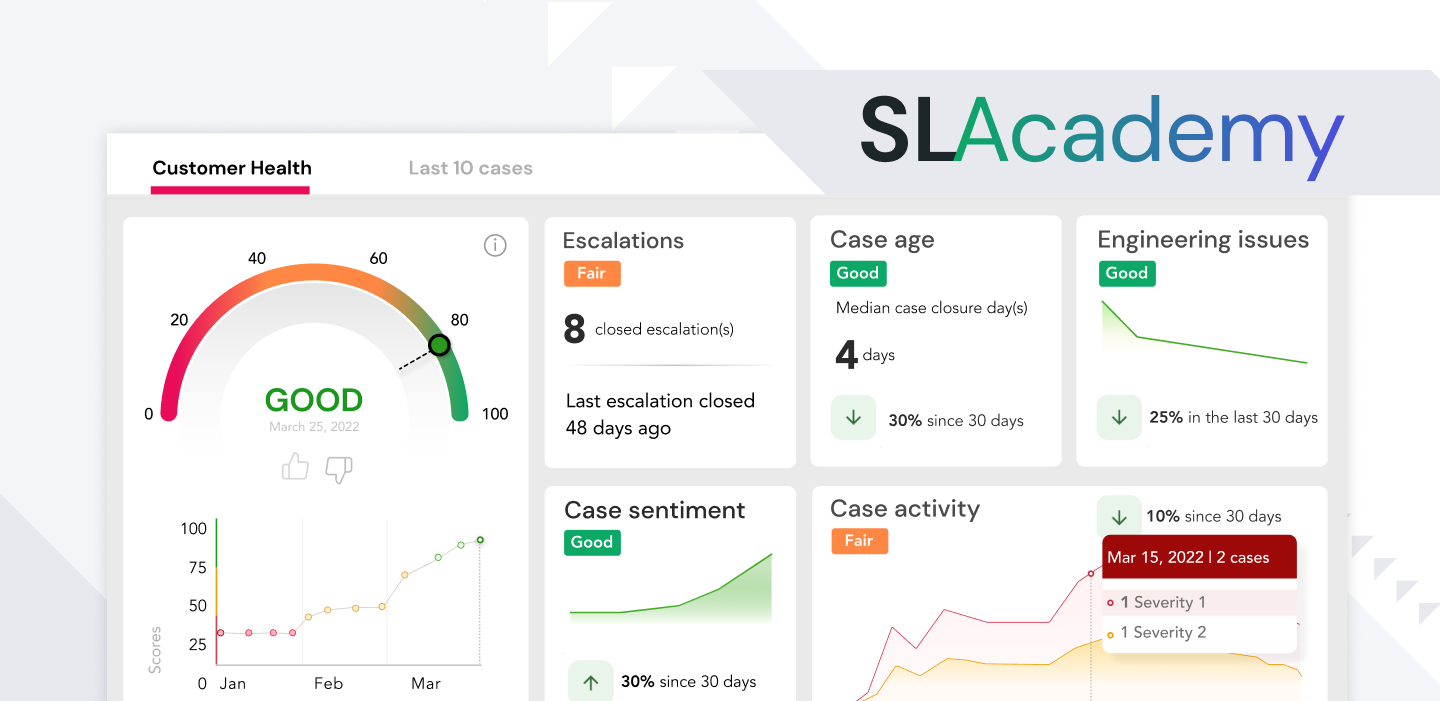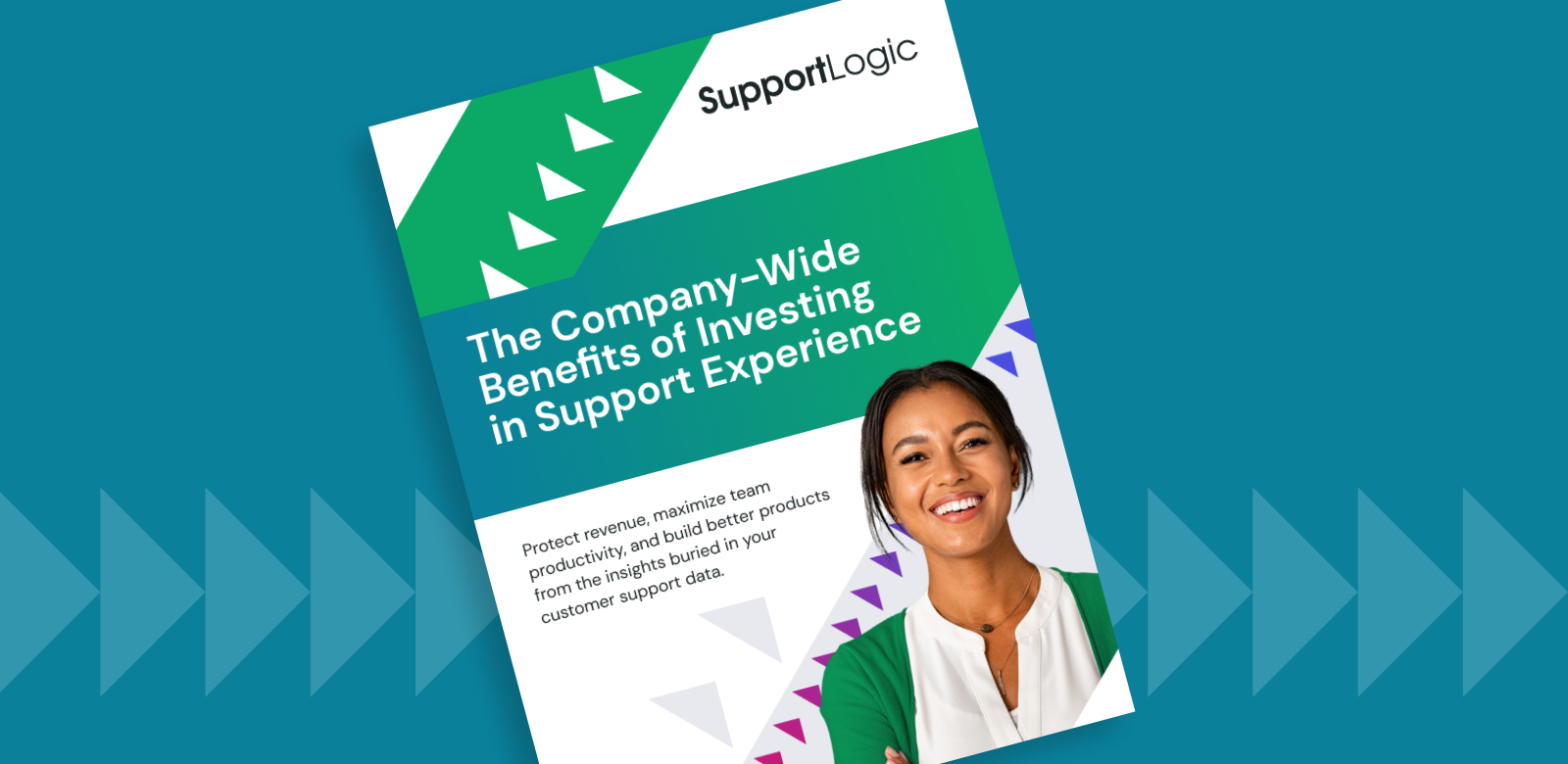
Feb 28, 2023
4 Customer Success Strategies for Forward-Thinking Teams
Customer Successnext gen supportcustomer experience
If you think customers care more about prices than service, think again. According to Zendesk’s 2022 Customer Experience Trends Report, customers will pay more for a great customer experience, with 90% saying that they would spend more with companies with personalized customer service.
A majority of business leaders polled in the same Zendesk report said that customer service positively impacts their company’s growth (64%) and improves customer retention (60%). Another 47% said that customer support increases their ability to cross-sell and upsell related products and services to existing customers.
The data speaks for itself: support is now a revenue center, not just a cost center. High-performing companies are over seven times more likely to identify customer service as a vital revenue driver and three times more likely to invest in it accordingly.
Help your support team stay productive and keep customers happy by investing in new technologies and forward-thinking customer success strategies.
1. Shift to proactive support with AI
Proactive support is not a new concept. Knowledge bases and self-service portals are classic examples of proactive support. These resources help customers answer questions without having to engage your support team. When you send out surveys to learn about customer preferences and then act on the insights you’ve gained, that’s a form of proactive customer support as well.
But with artificial intelligence, it’s easier than ever to offer proactive support.
Consider self-service resources. Traditionally, you direct customers to a knowledge base or FAQ page and ask them to search for their issue.
An AI chatbot kicks things up a notch. By identifying key phrases in their chats, bots can send customers right to the sentence or paragraph with the information they need. The more customers the AI chatbot helps, the more accurate and helpful its answers become.
Support and success teams can also use AI technology and automation to identify common customer issues and come up with proactive solutions by using products like support health score.
2. Adopt an account-centric philosophy
A recent McKinsey study shows that 71% of consumers expect personalized interactions with companies, and 76% show signs of frustration when they don’t receive it. It’s no longer about if you close a ticket but how you do it. If the customer had to repeat information to the agents and the solution didn’t take their needs into account, you aren’t offering personalized experiences.
It’s no longer about offering one-off solutions that are fast and standardized. It’s about learning from every interaction in order to tailor your support efforts to each customer’s exact needs.
Customer support teams need a centralized location where customer data is stored, analyzed, and accessed by the entire team. This is usually a customer relationship management (CRM) platform like Zendesk or Salesforce. Easily integrated with most popular CRMs, SupportLogic allows you to unlock the power of customer data by analyzing customer interactions and giving your team actionable recommendations on what your customers truly want to see from you.
When expansive customer data is available to agents, they can solve problems in an account-centric manner. Context and data related to the active problem that needs to be solved are not enough. Agents must have access to the entire customer lifecycle. With this data available, agents can solve current problems in a way that best suits the customer based on their previous interactions, experiences, and preferences.
Sentiment analysis is another process that’s key to an account-centric approach to customer success. AI is programmed to discover and measure customers’ emotions to determine how they feel about your company and your support based on past interactions.
Sentiment analysis tools look at the words and phrases your customers use to determine a customer’s mood and emotions. At the most basic level, AI scores sentiment as positive or negative.
Further analysis can determine more specific emotions and advise agents accordingly. For example, if sentiment analysis determines that a customer is annoyed or frustrated, AI can flag the case as urgent and advise the agent to approach the case with urgency, politeness, and empathy.
3. Strengthen your team’s soft skills
We often label soft skills as “emotional intelligence.” They are the communication and interpersonal skills that define how your agents interact with customers.
Soft skills are also tools. They promote agent attitudes and behaviors that customers respond to positively. Make these skills a core tenet of your agent training and onboarding process, with a focus on:
Empathy
Empathy is the ability to put yourself in the shoes of your customer—being able to imagine yourself in their situation and understand their emotions and ideas when in that situation.
It’s a powerful skill in customer-facing roles because it enables agents to provide authentic, personalized responses—ones that go beyond the basic “we’re sorry” or “thank you” responses.
Teach empathy through role-playing scenarios. Build out complex customer stories and demonstrate how empathy can be applied at each step. Use video and audio recordings of customer-agent interactions to highlight what empathetic interactions look like and how to recognize when your approach lacks empathy.
Train agents to pick up on important visual and verbal cues. It’s easier to practice and perfect what empathetic customer communication sounds and looks like when you can see examples of it in action.
Active listening
Active listening is attempting to understand the message that is being communicated to you, not just hearing the words. It means paying close attention to your customers when they are speaking to you.
When agents are actively listening, they aren’t trying to think of what to say next. They’re engaged and focused on what the customer is saying.
Teach agents to show customers they are listening both physically (head nods, eye contact) and verbally with subtle interjections (“yes,” “I see,” “mm-hmm”).
Once the speaker has finished, the agent should briefly restate what the customer said to confirm that they heard it correctly. For example, they can start the sentence with “If I understand correctly” and then paraphrase the problem to receive confirmation from the customer.
Patience
Patience in customer service means staying calm in tense situations. Agents don’t let their negative emotions prevail, even when they’re frustrated, and they focus on keeping the customer happy.
To help agents practice patience, remind them to breathe during contentious customer interactions. Agents should practice inhaling deeply and exhaling slowly and calmly without noises that can be interpreted as a negative emotion.
Teach agents the importance of learning to accept what they can and cannot control and focus on what they can do—actively listen and show empathy to customers no matter what.
4. Track KPIs to monitor efficiency
As a support leader, you might talk to a few happy customers and think, “my team is nailing it!”
You could be right, but you don’t want to just rely on a small data set—or worse, your gut feeling—to gauge your customers’ happiness. Confirm your support team’s performance by tracking these KPIs.
- First Response Time (FRT) is the measurement of the average time it takes for agents to respond to a customer’s issues. To calculate your FRT, simply divide a set period (day, week, month) by the number of resolved tickets in that time. For example: 32,000 seconds ÷ 400 resolved tickets = 80 seconds FRT. The lower your FRT number is, the faster your response.
- First Contact Resolution (FCR) is the rate at which you can address and solve problems without needing more than one interaction. The FCR defines your support team’s delivery effectiveness and cost efficiency. It shows the percentage of customers who resolved their issues on first contact. This customer satisfaction KPI allows you to see which agent touchpoint struggle to solve cases quickly and focus on improving them.
- Average Resolution Time (ART) is a measurement of the average time it takes your agents to solve all opened tickets. Increases in ART don’t necessarily mean that your agents are underperforming. It could be a sign that customer queries are becoming increasingly complex or that your processes need to be updated and optimized to help the agents close tickets faster.
- Customer Effort Score (CES) measures how easy it is for a customer to do business with you. All teams use this KPI, not just support. In support, however, it measures how much effort a customer has to put in to get an issue resolved. The better your CES, the better your customer loyalty rates are. Customers enjoy working with companies that make interactions easy and stress-free.
- Customer Retention Rate (CRR) measures the percentage of customers a company keeps over a period—the percentage of customers that do not churn. CRR is more difficult to calculate because you are (hopefully) gaining new customers over time as well. To get accurate CRRs, use this formula: (X (number of customers you have at the end of the week/month/year) – Y (number of new customers gained during that period)) ÷ Z (number of customers you had at the start of the period) x 100 (to get the percentage).
Implement your customer success strategy with the right tech stack
Customer support and success managers can’t implement forward-thinking initiatives without the right tools. To build a proactive, revenue-producing customer experience, equip your team with tools that will help them monitor, analyze, and strengthen the right customer success metrics.
SupportLogic SX makes it easy to monitor customer interactions and extract insights from them. This real-time data paints a clear picture of customer needs, making it easier for your team to optimize support and meet customer expectations with tailored and personalized experiences.
To learn more about how SupportLogic can transform your support efforts, explore our self-guided tours.
Don’t miss out
Want the latest B2B Support, AI and ML blogs delivered straight to your inbox?



